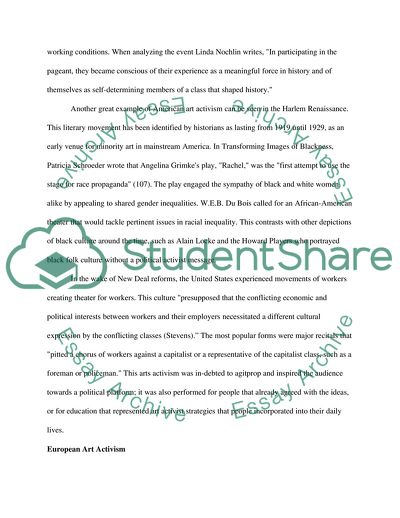Cite this document
(European Art Activism and Dance as Activism Essay Example | Topics and Well Written Essays - 1250 words, n.d.)
European Art Activism and Dance as Activism Essay Example | Topics and Well Written Essays - 1250 words. https://studentshare.org/visual-arts-film-studies/1729447-arts-activism
European Art Activism and Dance as Activism Essay Example | Topics and Well Written Essays - 1250 words. https://studentshare.org/visual-arts-film-studies/1729447-arts-activism
(European Art Activism and Dance As Activism Essay Example | Topics and Well Written Essays - 1250 Words)
European Art Activism and Dance As Activism Essay Example | Topics and Well Written Essays - 1250 Words. https://studentshare.org/visual-arts-film-studies/1729447-arts-activism.
European Art Activism and Dance As Activism Essay Example | Topics and Well Written Essays - 1250 Words. https://studentshare.org/visual-arts-film-studies/1729447-arts-activism.
“European Art Activism and Dance As Activism Essay Example | Topics and Well Written Essays - 1250 Words”. https://studentshare.org/visual-arts-film-studies/1729447-arts-activism.


